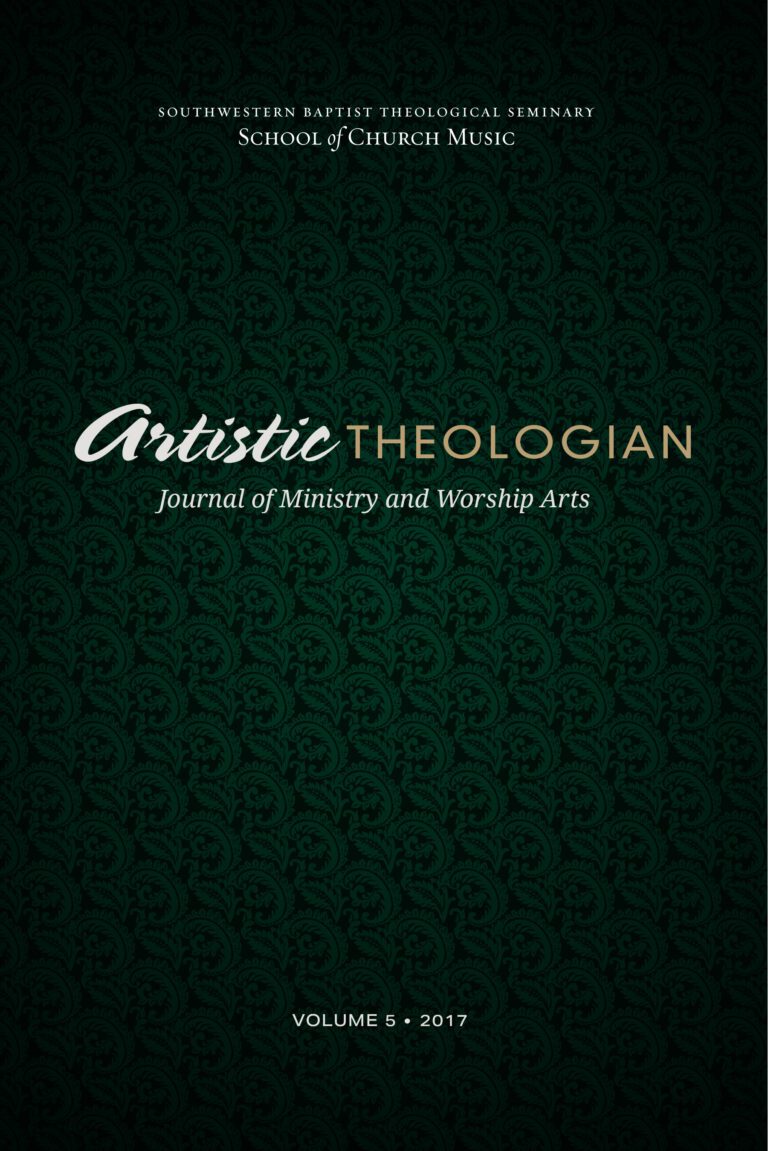
Forming Disciples through Corporate Worship
Artistic Theologian
Volume 5, Summer 2017
Editor-in-Chief: Scott Aniol
The Temple and the Tabernacle: A Study of God’s Dwelling Places from Genesis to Revelation, J. Daniel Hays. Grand Rapids: Baker Books, 2016. $19.99.
“The temple and the tabernacle serve as the dwelling place of God himself, and this ‘tabernacling’ presence of God among his people, relating to them in his gracious covenant love, is, without doubt, one of the most central and important themes in the Bible” (185). J. Daniel Hays, Dean of Christian Studies at Ouachita Baptist University, makes this powerful statement in his book The Temple and the Tabernacle. The purpose of this book is for the reader to gain a greater appreciation and understanding of God’s tabernacling presence. By tracing through the “Bible chronologically, examining theologically how God’s presence, power, and holiness engage with people through ‘temples,’ or ‘temple-like’ places,” Hays aims to elucidate how “God dwells among his people and encounters them in relational presence” (10–11).
Hays opens with a brief explanation of the temple and tabernacle, and he examines the Greek and Hebrew words used to express them. He then traces God’s dwelling in the Garden of Eden, the tabernacle, and Solomon’s temple. God’s departure from the temple and an examination of the second temple follow. Hays closes by elucidating the New Testament dwelling of God, and he explains what it means for Christians today.
Hays attempts to defend his thesis in many ways. First, He clearly explains the presence of God in the Garden of Eden. By examining God’s dwelling in the garden, Hays fulfills his goal of showing how the power, holiness, and presence of God dwelt among Adam and Eve. He argues that Eden carries temple-like qualities. Hays states that “the garden . . . is a place where God’s presence dwells in a special kind of way so that his people can be with him and worship him,” thus the Garden of Eden fulfills the “function of a sanctuary or temple” (21). Hays explains how God dwells personally with his people stating that “just as the tabernacle and the temple will become the residence of God and the place where God meets his people, so the garden functions in the same manner” (22). Hays makes a strong argument for the Garden of Eden being a temple where God’s relational presence dwells among Adam and Eve.
Another way in which Hays attempts to fulfill his telos is by examining the dwelling of God in the tabernacle. Hays provides evidence by illuminating the divinely prescribed items of the tabernacle. For example, he clearly expresses how God’s holiness, presence, and power is seen in the ark of the covenant. The “focal point of God’s presence” is the item that is the “most central and the most holy, the ark of the covenant” (36). The table of shewbread is another strong example given by Hays because it likely represents how God chooses to fellowship with his people (43–44). Similarly, with the altar of incense, “the smoke and fire combination fills the holy place and signals clearly that one is entering into a very sacred place and drawing near to the very presence of God” (51). The tabernacle’s purpose was to house the special, holy presence of God, and in it God powerfully dwelt among his people and traveled with them.
In addition to God dwelling in Eden and the tabernacle, Hays also argues that God’s special presence can be seen in the New Testament. Hays explains that Christ is the temple, and he uses John 1:14 as evidence that Christ tabernacled among his people. Because the Holy Spirit dwells within every believer, the individual Christian is a temple of God’s holy presence. Hays argues that the church is also the temple of God stating that “believers as a group (i.e., the church) function together as a temple as well, with Jesus Christ as the special cornerstone for this new temple, and the presence of God dwelling within the temple to empower and bless his people” (179). Hays clearly defends his thesis by examining God’s powerful New Testament dwelling in Christ, the Christian, and the church.
The aforementioned arguments and evidences are particularly strong. His explanation of how Christ fulfilled the tabernacle is informative and biblical. Also, his examination of God’s presence leaving the temple is thorough, and his archeological, historical perspective on Herod’s temple is informative. Overall, Hays was successful in achieving his aim.
Though written quite well, Hays’s book has room for improvement. His argument that Eden parallels the tabernacle and temple would have been enhanced by exploring Adam’s role as a priest in the Garden. He possibly stretches a couple of symbols, for example, the cherubim’s swords symbolizing lightning (23). The author’s statement that God “[did] not initiate the construction” of Solomon’s temple is problematic because he places Solomon’s building of the temple in a negative light, making inferences that are not clearly stated in Scripture (73). In contrast to Hays’s claim, 1 Chronicles 28:6–8 expresses that God chose Solomon to build the temple instead of David. Hays states, when examining 1 Kings 6:12–13, that “God does not respond to Solomon with praise or explicit approval, but rather with cautionary warning” (74). God’s warning does not provide proof that God did not initiate the building of Solomon’s temple, thus it seems that Hays’s claim is more speculation than sheer fact.
This book is highly recommended for those interested in Hebrew and Christian worship, history, and archeology. It includes helpful pictures and charts, which aid in the understanding of the topic at hand. Hays’s book is well written and informative: a great addition for any bookshelf.
John Gray
Southwestern Baptist Theological Seminary





